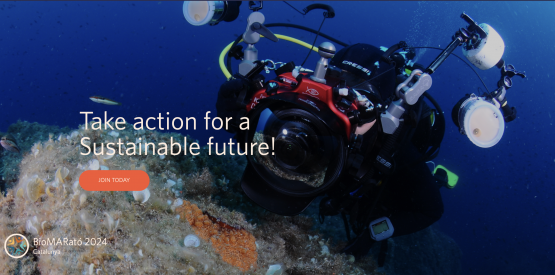
ANERIS Project Milestone: MINKA Surpasses 200,000 Marine Observations
A significant achievement within the framework of the ANERIS project is that the MINKA Citizen Science Observatory has now surpassed 200,000 verified marine observations on the Catalan coast. This remarkable milestone is a testament to the successful collaboration between citizens, researchers, and the various European initiatives supporting marine biodiversity conservation, including the ANERIS project.
MINKA, developed by the Institute of Marine Sciences (ICM-CSIC), has established itself as one of the Mediterranean's largest participatory marine data platforms. More than 780 individuals have submitted 222,705 observations with photos of organisms found on the Catalan coast to MINKA. Out of these observations, validating and identifying the photographed species was possible in 203,744 observations, reaching a total of 2,831 species detected. This comprehensive and verified dataset has positioned MINKA as one of the leading participatory platforms in Spain for coastal and marine biodiversity data and the most comprehensive one in the Mediterranean region.
All these observations have reached the research grade, which means meeting the scientific community's necessary criteria for being used in research. All research-grade observations have location and date information, photographic evidence, and expert validation of the species. Also, the entire dataset is openly accessible.
"The success of MINKA demonstrates the impact of citizen science. Thanks to the collaboration of citizens and researchers, we have built an unparalleled database with significant potential for marine conservation, the generation of new knowledge, and evidence-based decision-making," explains Jaume Piera, lead of the EMBIMOS research group at the ICM-CSIC and coordinator of the ANERIS project.
Globally, MINKA has already amassed 268,371 research-grade observations covering 7,167 different species.
The Mediterranean slipper lobster, observation number 200,000

Verifiable observation 200,000: MINKA, Jose Manuel Moral Astals, Participant in the BioMARató
Thanks to citizen data, 98 alien species have been detected, some of them invasive, such as the Atlantic pearl oyster (Pinctada imbricata) or the red algae Asparagopsis taxiformis, of which the first records appeared last year and which is now widespread along almost the entire Catalan coast. The most recent appearance on the platform is the Asian seaweed (Rugulopteryx okamurae), which was recently observed in Llançà.
 Rugulopteryx okamurae, MINKA, Xavier Salvador, ICM-CSIC
Rugulopteryx okamurae, MINKA, Xavier Salvador, ICM-CSIC
110 threatened or protected species have also been recorded, including various seabirds, cetaceans and some species of fish such as seahorses, the spinetail devil ray (Mobula mobular) and the knobbed triton Snail (Charonia lampas), which are currently being monitored through citizen participation with FECDAS (Catalan Federation of Underwater Activities).
The 200,000th observation was of a Mediterranean slipper lobster (Scyllarides latus), a threatened and difficult-to-observe crustacean. Jose Manuel Moral Astals took a photograph in the Cueva del Infierno, in the Cap de Creus Natural Park, in an area where fishing is prohibited, during an outing as part of a knobbed triton Snail (Charonia lampas) research to contribute to BioMARató.
BioMARató 2024, an example of citizen and entity mobilisation
The BioMARató is a friendly competition between the provinces of Catalonia promoted by the EMBIMOS research group of the Institute of Marine Sciences (ICM-CSIC) in the framework of the European projects ANERIS, MINKE, ECS and GUARDEN. The event awards the participants with the highest number of observations and species recorded and recognises the most active province, taking into account the number of observations, species observed, and participants. The data collected is shared in biodiversity repositories and is available to the ICM-CSIC research teams.
The ICM-CSIC has been recording and cataloguing the marine species of the Catalan coast for four years with the help of volunteers in this type of event. In the 2024 edition, which began on May 6 and will end on October 15, 1,484 species have already been reported, and more than 43,000 observations have already been exceeded, compared to the 60,000 reported last year during the event.
Video credits: MINKA, Xavier Salvador, ICM-CSIC
The BioMARató success highlights the importance of collaborative efforts for marine conservation and positions ANERIS as a key player in integrating science, technology, and citizen participation to preserve marine ecosystems.